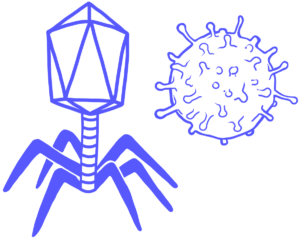What We Know about the New Chinese Virus
The World’s Scientists are racing to find out more about the New Chinese Virus. The Virus is spreading in Asia and beyond. The first confirmed case in the U.S. is thought to be a traveler infected with the virus. China’s continuing viral outbreak has health authorities around the world on alert. The goal, to keep it from spreading.
A U.S. man in his early 30’s came back from the city of Wuhan ion China
 . This is where the virus appears to have originated. He flew back to his home state of Washington on January 16. Hence, he started developing symptoms of the viral infection. He went to the doctor on January 20th. The test results confirmed a reverse transcription-polymerase chain reaction. Again, now confirming he had been infected with the virus.
. This is where the virus appears to have originated. He flew back to his home state of Washington on January 16. Hence, he started developing symptoms of the viral infection. He went to the doctor on January 20th. The test results confirmed a reverse transcription-polymerase chain reaction. Again, now confirming he had been infected with the virus.
An infectious entity that can only persist by hijacking a host organism to replicate itself. Has its own genome, but is technically not considered a living organism. Viruses infect all organisms, from humans to plants to microbes.
The man is now doing well and was being treated this week at a hospital in Everett, Washington. Finally, he was kept in an isolation unit. Again, showing an abundance of caution. This was reported by a person for the U.S. Centers for Disease Control and Prevention in a Wednesday news briefing.
New Chinese Virus
 The new Chinese virus is called 2019-nCoV. First, it has infected hundreds and hundreds of people so far. Second, 18 current deaths. according to the Chinese authorities. It was first identified in Wuhan in late 2019. The source, the virus umped from animals to humans at a local seafood market. Also, the market also sold other wild animal meats. Chinese officials have since confirmed multiple cases of human-to-human transmission. The pathogen causes severe acute respiratory syndrome (SARS) and Middle East respiratory syndrome (MERS).
The new Chinese virus is called 2019-nCoV. First, it has infected hundreds and hundreds of people so far. Second, 18 current deaths. according to the Chinese authorities. It was first identified in Wuhan in late 2019. The source, the virus umped from animals to humans at a local seafood market. Also, the market also sold other wild animal meats. Chinese officials have since confirmed multiple cases of human-to-human transmission. The pathogen causes severe acute respiratory syndrome (SARS) and Middle East respiratory syndrome (MERS).
Cases of the new Chinese virus have now been confirmed in a couple of other countries. For example, Thailand, Japan and South Korea. Furthermore, 3 U.S. airports, (San Francisco, Los Angeles and New York have started to screen passengers arriving from Wuhan last week. This week, 2 more airports were added (Atlanta and Chicago) The risk to the U.S. public is currently not very high according to the CDC. However, the agency says it is working closely with other health organizations around the globe to contain the virus’s spreading.
Can Medication developed to treat coronavirus?
No medication have been shown to be effective in treating SARS or other coronavirus . The same applies to this new chines virus. In fact, no vaccines have been licensed. Hence, no Electronic Pill Dispensers will hold the cure.
A team at China’s National Engineering Research Center for the Emergence Drugs in Beijing is working on finding therapies. The research focus on blocking the receptor on human cells that the virus latches on to. The site is what the virus uses to infect the host. A comparison of the SARS and new China virus sequences, published on 16 January, found that they bind to the same receptor. The team is hoping to revive efforts to develop treatments for SARS and adapt them in a bid to make a drug could work against the new chinese virus.
Sponsored By Med-Q Electronic Pill Dispenser

How is the virus able to spread?
The big question, how it spreads. The Chinese government has have confirmed that transmission between humans has been confirmed. However, there is still uncertainty whether this will happen routinely.
It is vital to understand is whether that’s occurring at a rate which would sustain a human epidemic. Monitoring the rate at which new cases appear, and when symptoms began is important. To illustrate, showing how easily the virus can pass between people. Finally, whether the outbreak has the potential to continue with deadly results.
How deadly is it?
 The first victims infected had very high rates of pneumonia. The concerns have reduced slightly, as some more mild cases have occurred. There has bee 18 deaths in more than 500 infections. In fact, the virus is not as deadly as SARS .
The first victims infected had very high rates of pneumonia. The concerns have reduced slightly, as some more mild cases have occurred. There has bee 18 deaths in more than 500 infections. In fact, the virus is not as deadly as SARS .
Severe acute respiratory syndrome (SARS) is a viral respiratory illness caused by a coronavirus called SARS-associated coronavirus (SARS-CoV). SARS was first reported in Asia in February 2003.
SARS killed an estimated 12% of the people it infected. But “It’s too early to be sanguine about the severity.
Where did the virus come from?
 The current theory, the virus originated in an unidentified animal or animals. Again, then spread to humans in a seafood market in Wuhan. First of all, they are trying to identify the animal source of the virus. Genetic sequencing suggests that the Wuhan virus is related to coronaviruses that circulate in bats. Furthermore, SARS and it’s close relatives. But other mammals are able transmit the viruses as well. In fact, SARS was probably spread to humans by a cat.
The current theory, the virus originated in an unidentified animal or animals. Again, then spread to humans in a seafood market in Wuhan. First of all, they are trying to identify the animal source of the virus. Genetic sequencing suggests that the Wuhan virus is related to coronaviruses that circulate in bats. Furthermore, SARS and it’s close relatives. But other mammals are able transmit the viruses as well. In fact, SARS was probably spread to humans by a cat.
The market where the outbreak seems to have originated has been closed. Tracing other cases to the market could help to identify the source. Also, testing the animals from the market for viral genetic material will help.
The odd thing about the genetic sequencing is how close they are to each other. There’s very little diversity to be seen. The lack of genetic diversity suggests that the common ancestor of the different human strains emerged in November or December . This, began to spread rapidly. The spreading has yet to cause many mutations. Those it has gained tend to be distinct for each virus sequence. However, the genomes don’t yet indicate whether the rapid expansion of the virus is happening in people.
The good news, sequences could also identify any genetic changes. Thus, helping the virus make the jump from animals to people. However, thee outbreak could drag on because of extensive human-to-human contact as well as transmission,


